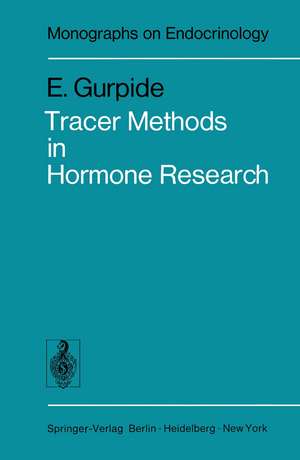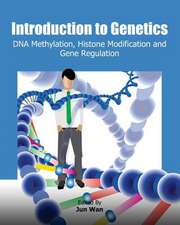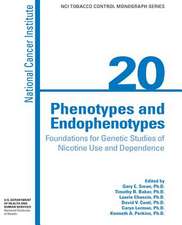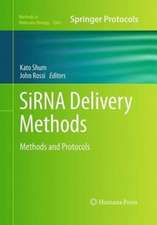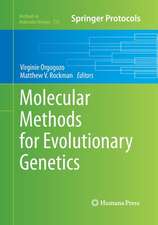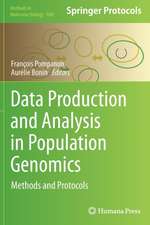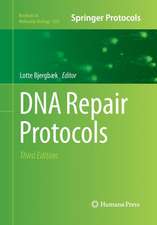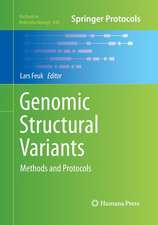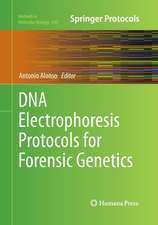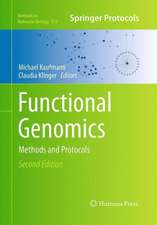Tracer Methods in Hormone Research: Monographs on Endocrinology, cartea 8
Autor E. Gurpideen Limba Engleză Paperback – 12 iun 2012
Din seria Monographs on Endocrinology
- 18%
 Preț: 722.26 lei
Preț: 722.26 lei - 5%
 Preț: 710.06 lei
Preț: 710.06 lei - 5%
 Preț: 709.51 lei
Preț: 709.51 lei - 5%
 Preț: 740.79 lei
Preț: 740.79 lei - 5%
 Preț: 705.32 lei
Preț: 705.32 lei - 5%
 Preț: 716.09 lei
Preț: 716.09 lei - 5%
 Preț: 718.10 lei
Preț: 718.10 lei - 5%
 Preț: 721.77 lei
Preț: 721.77 lei - 5%
 Preț: 713.70 lei
Preț: 713.70 lei - 5%
 Preț: 709.51 lei
Preț: 709.51 lei - 5%
 Preț: 707.69 lei
Preț: 707.69 lei - 5%
 Preț: 395.51 lei
Preț: 395.51 lei - 15%
 Preț: 644.82 lei
Preț: 644.82 lei - 5%
 Preț: 712.25 lei
Preț: 712.25 lei - 5%
 Preț: 362.16 lei
Preț: 362.16 lei - 5%
 Preț: 709.35 lei
Preț: 709.35 lei - 5%
 Preț: 714.63 lei
Preț: 714.63 lei - 5%
 Preț: 706.41 lei
Preț: 706.41 lei - 5%
 Preț: 712.25 lei
Preț: 712.25 lei - 5%
 Preț: 769.13 lei
Preț: 769.13 lei - 5%
 Preț: 738.57 lei
Preț: 738.57 lei - 5%
 Preț: 722.69 lei
Preț: 722.69 lei - 5%
 Preț: 723.42 lei
Preț: 723.42 lei - 5%
 Preț: 406.11 lei
Preț: 406.11 lei - 15%
 Preț: 637.59 lei
Preț: 637.59 lei - 5%
 Preț: 716.84 lei
Preț: 716.84 lei - 5%
 Preț: 721.56 lei
Preț: 721.56 lei - 5%
 Preț: 708.78 lei
Preț: 708.78 lei - 5%
 Preț: 731.64 lei
Preț: 731.64 lei - 5%
 Preț: 710.96 lei
Preț: 710.96 lei - 5%
 Preț: 711.52 lei
Preț: 711.52 lei - 5%
 Preț: 360.86 lei
Preț: 360.86 lei
Preț: 712.60 lei
Preț vechi: 750.11 lei
-5% Nou
Puncte Express: 1069
Preț estimativ în valută:
136.37€ • 148.08$ • 114.55£
136.37€ • 148.08$ • 114.55£
Carte tipărită la comandă
Livrare economică 22 aprilie-06 mai
Preluare comenzi: 021 569.72.76
Specificații
ISBN-13: 9783642808944
ISBN-10: 3642808948
Pagini: 208
Ilustrații: XII, 190 p. 1 illus.
Dimensiuni: 170 x 244 x 11 mm
Greutate: 0.34 kg
Ediția:Softcover reprint of the original 1st ed. 1975
Editura: Springer Berlin, Heidelberg
Colecția Springer
Seria Monographs on Endocrinology
Locul publicării:Berlin, Heidelberg, Germany
ISBN-10: 3642808948
Pagini: 208
Ilustrații: XII, 190 p. 1 illus.
Dimensiuni: 170 x 244 x 11 mm
Greutate: 0.34 kg
Ediția:Softcover reprint of the original 1st ed. 1975
Editura: Springer Berlin, Heidelberg
Colecția Springer
Seria Monographs on Endocrinology
Locul publicării:Berlin, Heidelberg, Germany
Public țintă
ResearchCuprins
1. Rates in Open System in the Steady State: Definitions and Relations.- A. One Pool Embedded in a Multicompartmental System.- B. Two Related Pools Embedded in a Multicompartmental System.- C. Three Related Pools Embedded in a Multicompartmental System.- D. General Systems of m Related Pools.- 2. Infusion of Tracers at a Constant Rate.- A. Multicompartmental System in Which Only One Pool is Studied.- B. Multicompartmental System in Which Two Pools are Studied.- C. Multicompartmental System in Which Three Pools are Studied.- D. General m-Primary-Pool Subsystem.- 3. Rapid Injection of Tracers.- A. Calculations Based on Areas under Specific Activity Curves.- B. Relationships Between Data Obtained by Rapid Injection and by Constant Infusion of a Tracer.- C. Calculations Based on the Shape of Specific Activity Curves.- D. Determination of Areas and Shapes of Specific Activity Curves.- 4. Tracer Kinetics in Compartmental Models.- Rate Constants (k’s).- Fractional Rates (h’s).- A. One-Pool System.- B. Two-Pool Systems.- C. Multiple-Pool Systems.- 5. Interpretation of Isotopic Data from Blood-Borne Compounds.- I. Data: Isotopic Steady-State Values or Areas under Concentration Curves.- II. Data: Specific Activity Functions.- III. Calculations Based on Models Involving a Limited Number of Compartments.- IV. Analysis of Systems that are Not at the Steady State.- 6. Rates of Secretion and Metabolism of Hormones Estimated from Specific Activities of Urinary Metabolites.- A. Estimation of Hormone Secretion Rates.- B. Interpretation of Specific Activity Data Obtained from Labeled Urinary Metabolites.- C. Parameters of Metabolism Estimated from Labeled Urinary Metabolites.- D. Labeled Urinary Metabolites in Pregnancy.- E. Comments.- 7. In vitro Tracer Superfusion Experiments.-Superfusion Versus Batch Incubations.- Use of Two Metabolically Related Tracers in Superfusion Experiments.- Model.- Calculation of Rates of Entry of Superfused Tracer into Cells.- Fraction of a Superfused Tracer Returning from the Cells to the Medium.- Fraction of Superfused Tracer Appearing in the Perfusate as a Metabolite.- Conversion Factors.- Rates in the Superfusion Model.- Intracellular Clearance.- A Special Case: Nonsteroidogenic Tissue.- Validation of the Model.- Applications.- References.
